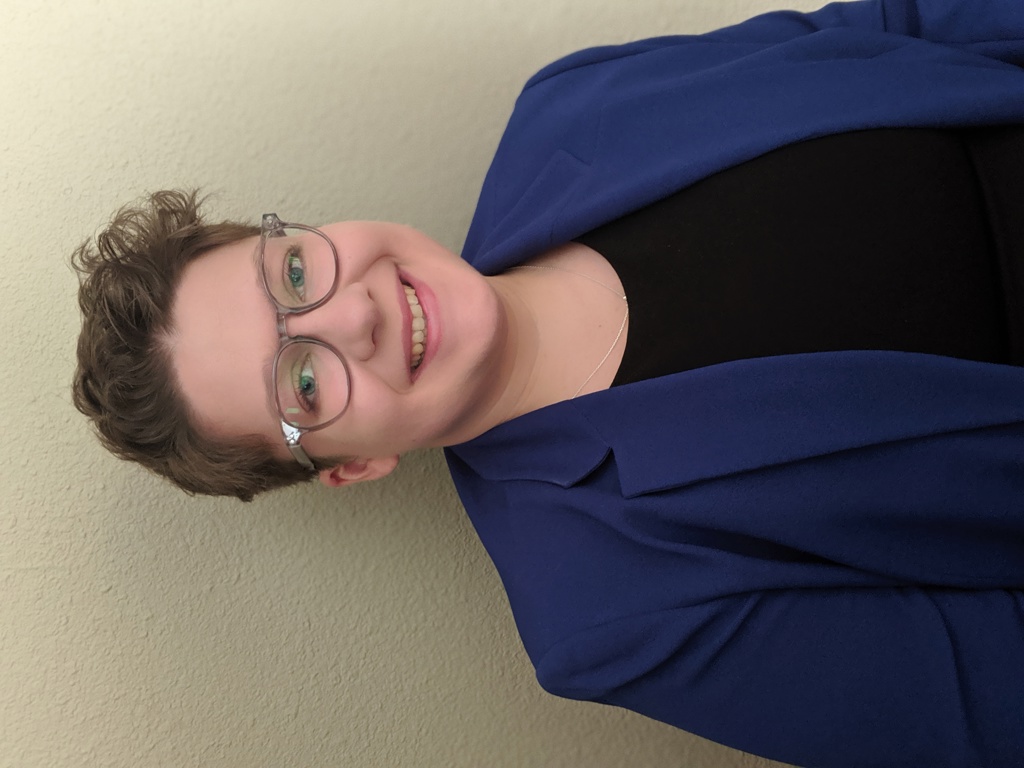Optica, MRS and SPIE announce newest Congressional Science and Engineering Fellows
About Optica
16 June 2022
Optica, MRS and SPIE announce newest Congressional Science and Engineering Fellows
Two Fellows will contribute their scientific expertise to U.S. policymaking and gain valuable experience
WASHINGTON—Optica (formerly OSA), Advancing Optics and Photonics Worldwide, the Materials Research Society (MRS) and SPIE, the international society for optics and photonics, have announced the selection of the 2022-23 Congressional Science and Engineering Fellows: Sindhu Nathan and Clara Tibbetts. Both Fellows will serve a one-year term in Washington, D.C., USA as a special legislative assistant for a member of the U.S. Congress or as a staff member for a congressional committee.
The Congressional Fellowship is a unique opportunity for Ph.D. scientists and engineers to lend their technical and scientific backgrounds to federal policymaking. Fellows also gain firsthand experience in the policymaking process by participating in a variety of ways including, conducting legislative or oversight work, assisting in congressional hearings and debates, preparing policy briefs and writing speeches.
Nathan will serve as the 2022-23 Optica/MRS Congressional Fellow, and Tibbetts has been named the 2022-23 Arthur H. Guenther Congressional Fellow, co-sponsored by Optica and SPIE. Both Nathan and Tibbetts will begin their terms as fellows in September 2022.
“I am so incredibly honored to have the opportunity to serve as the Optica/MRS Congressional Fellow,” said Nathan. “I have developed a passion for energy and climate policy over the past several years and look forward to the chance to learn how to leverage my engineering background towards tackling policy issues like these on the Hill over the next year."
“I am excited for the opportunity to learn from policymakers and the chance to apply my background in chemistry to a range of policy issues, including climate and energy topics,” said Tibbetts. “It is an incredible honor to be this year’s Arthur H. Guenther Congressional Fellow.”
The American Association for the Advancement of Sciences (AAAS) provides training in science policy and communication as well as an orientation for new Fellows. After completing this training, Nathan and Tibbetts will meet with various U.S. Senate, House of Representatives and congressional committee staff before selecting which office or committee they wish to work in for their fellowship year.
Each year, following a formal application process, fellowship finalists are interviewed, and Congressional Fellows are selected by a committee comprised of volunteer members from Optica, MRS and SPIE. For more information on the selection process and fellowship criteria, visit the Optica, MRS or SPIE websites.

Optica/MRS Congressional Fellow:
Sindhu Nathan (she/her/hers) received her Ph.D. in chemical engineering from Stanford University. Her doctoral research focused on studying nanoparticle materials for sustainable fuel and chemical production. Prior to graduate school, she received her B.S. in chemical engineering from the University of Texas at Austin.
While at Stanford, she has explored the intersections of science and policy through several avenues. She served as the President of the Stanford Science Policy Group and was awarded a Shultz Energy Fellow to serve at the California Energy Commission in the Office of Commissioner Patty Monahan, where she supported efforts to expand electric vehicle charging infrastructure in California. She is also a 2021 Clean Energy Leadership Institute Fellow and served on the leadership council of the National Science Policy Network. Throughout her graduate career, she has had the opportunity to publish several memos related to energy and climate issues, and she is looking forward to the opportunity to gain a new perspective on the potential roles scientists may have throughout the legislative process.
Arthur H. Guenther Congressional Fellow:

Clara Tibbetts (she/her/hers) will graduate with her Ph.D. from the Chemistry Department at Colorado State University this summer. She uses ultrafast lasers to study questions in the fields of energy storage and renewable energy generation. For example, she studies electrolyte solutions used in different applications including lithium or sodium-ion batteries. Specifically, she has investigated the roles different materials play in determining device lifetimes and efficiency.
Beyond the lab, Clara is passionate about science policy and communication and believes that scientists have an obligation to effectively communicate our research to the public and policymakers. During graduate school, she was president of the CSU Science in Action group and led a team of graduate student leaders in policy-related activities and worked to build relationships with local policymakers and graduate students. She was also involved in other organizations focused on science communication and student advocacy. She has been an organizer for the Rocky Mountain ComSciCon, was a leadership fellow with the School of Global Environmental Sustainability and is currently a student representative with the CSU Graduate Center for Inclusive Mentoring.
About the Materials Research Society
MRS is an organization of more than 11,500 materials researchers from academia, industry and government worldwide, and a recognized leader in promoting the advancement of interdisciplinary materials research and technology to improve the quality of life. MRS members are students and professionals hailing from physics, chemistry, biology, mathematics and engineering—the full spectrum of materials research. Headquartered in Warrendale, Pennsylvania (USA), MRS membership now spans over 80 countries, with 45 percent of members residing outside the United States.
MRS serves and engages members across generations to advance their careers and promote materials research and innovation. The Society produces high-quality meetings and publications, assuring that members of all career stages can present and publish their most important and timely work to an international and interdisciplinary audience. MRS continues to expand its professional development portfolio, as well as promote diversity and inclusion in the scientific workforce, with career services for researchers worldwide. The Society advocates for the importance of scientific research and innovation to policymakers and the community. And the MRS Awards program honors those whose work has already had a major impact in the field, as well as those whose work shows great promise for future leadership.
For more information about the Materials Research Society visit mrs.org and follow @Materials_MRS.
About SPIE
SPIE, the international society for optics and photonics, brings engineers, scientists, students, and business professionals together to advance light-based science and technology. The Society, founded in 1955, connects and engages with our global constituency through industry-leading conferences and exhibitions; publications of conference proceedings, books, and journals in the SPIE Digital Library; and career-building opportunities. Over the past five years, SPIE has contributed more than $22 million to the international optics community through our advocacy and support, including scholarships, educational resources, travel grants, endowed gifts, and public-policy development. www.spie.org.
About Optica
Optica, Advancing Optics and Photonics Worldwide, is the society dedicated to promoting the generation, application, archiving and dissemination of knowledge in the field. Founded in 1916, it is the leading organization for scientists, engineers, business professionals, students and others interested in the science of light. Optica's renowned publications, meetings, online resources and in-person activities fuel discoveries, shape real-life applications and accelerate scientific, technical and educational achievement. Discover more at: Optica.org
Media Contact
